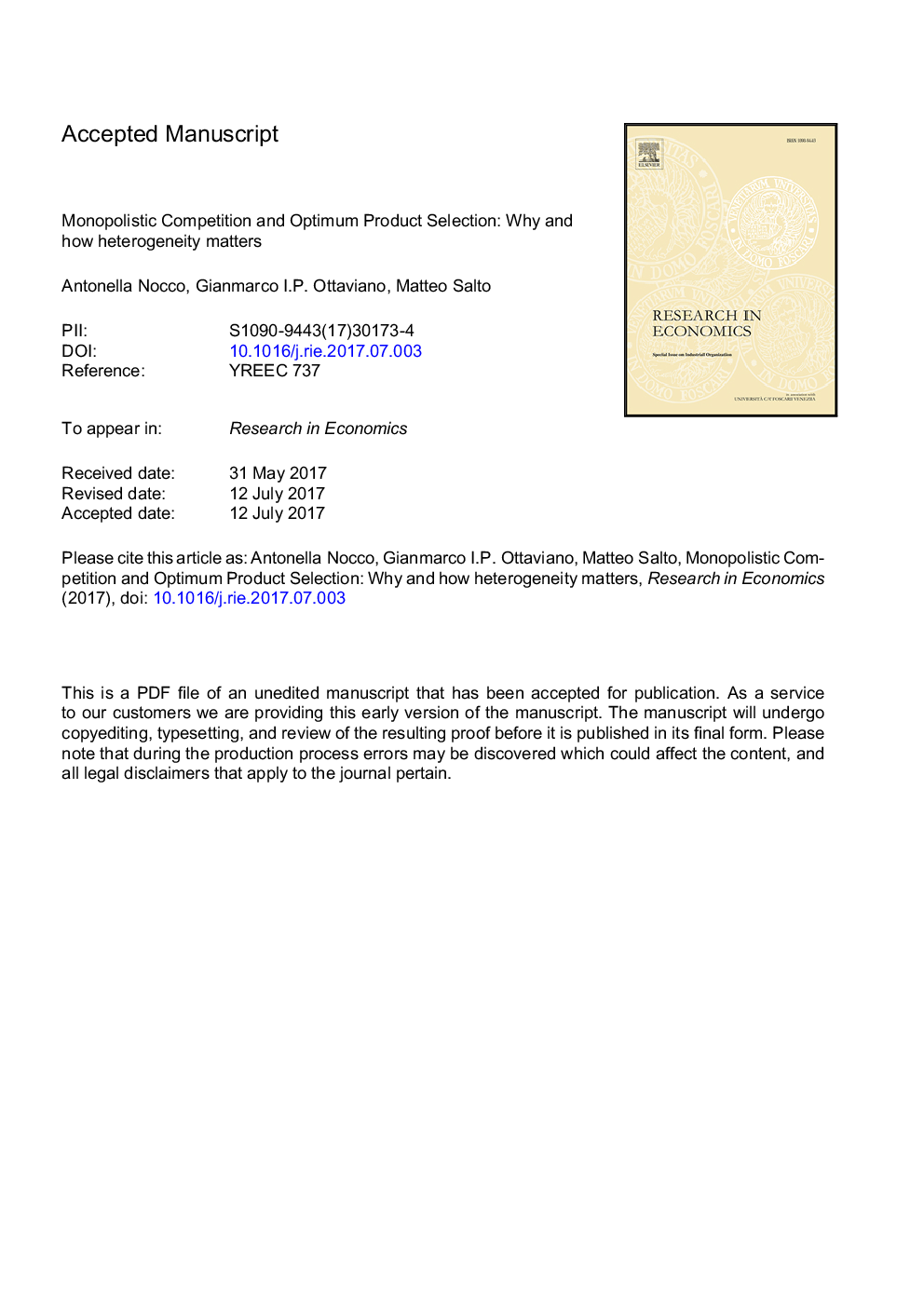ترجمه فارسی عنوان مقاله
رقابت انحصاری و انتخاب محصول بهینه: چرا و چگونگی ناهمگونی مهم است
عنوان انگلیسی
Monopolistic competition and optimum product selection: Why and how heterogeneity matters
| کد مقاله | سال انتشار | تعداد صفحات مقاله انگلیسی |
|---|---|---|
| 135419 | 2017 | 24 صفحه PDF |
منبع

Publisher : Elsevier - Science Direct (الزویر - ساینس دایرکت)
Journal : Research in Economics, Volume 71, Issue 4, December 2017, Pages 704-717
ترجمه چکیده
پس از چند دهه از فراموشی نسبی، علاقه به خواص بهینه بودن رقابت انحصاری به تازگی با توجه به در دسترس بودن یک چارچوب مناسب و معکوس برای مقابله با عدم همبستگی شرکت دوباره ظهور کرده است. در این چارچوب نشان می دهیم که ابزار غیر جدایی ناپذیری، متغیر تقاضای متغیر و ناهمگونی شرکت درونی، باعث ایجاد تعادل بازار در بسیاری از موارد، در مورد تعداد محصولات، اندازه و انتخاب تولید کنندگان، اندازه کلی بخش رقابتی انحصارا . بیشتر به لحاظ ادبیات موجود، ما نیز نشان می دهیم که میزان اشتباهات بستگی به درجه ناهمگونی شرکت دارد. به طور خاص، عدم کارآیی تعادل بازار بزرگترین است، زمانی که انتخاب بین شرکت های ناهمگن بیشتر مورد نیاز است، یعنی زمانی که شرکت های نسبتا زیادی با بهره وری کم و شرکت های نسبتا کم با بهره وری بالا وجود دارد.

